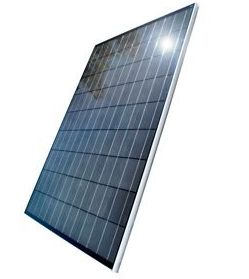 Thin-film solar, once predicted to be the future of renewable energy, has fallen on hard times lately. Venture-backed thin-film companies have had a tough time raising money, and even the bigger players like Applied Materials have scaled back their goals in the area.
Thin-film solar, once predicted to be the future of renewable energy, has fallen on hard times lately. Venture-backed thin-film companies have had a tough time raising money, and even the bigger players like Applied Materials have scaled back their goals in the area.
But one startup, AQT Solar (Applied Quantum Technologies), is going against the grain, forecasting a future in which crystalline silicon and thin-film, CIGS solar coexist, but are tailored to different applications. The company announced today that it is bringing its facility in Sunnyvale, Calif. online this month.
CIGS technology became a hot concept a couple years ago when silicon prices reached untenable heights and entrepreneurs went looking for cost-saving technologies. The acronym stands for the copper, indium, gallium and selenide that make up the thin-film cells. The idea was that this concoction would be much cheaper to mass produce that crystalline silicon cells, giving it an edge despite lower energy conversion efficiencies.
Advances in technology spawned a bevy of startups chasing after thin-film commercialization, including MiaSole, generously-funded Nanosolar and Solyndra — the Department of Energy-backed cylindrical solar cell maker that nearly went public before yanking its IPO filing. About $2 billion has been collectively sunk into thin-film to date.
In the past year or so, silicon prices have dropped steeply, making thin-film a less compelling concept. Crystalline silicon panels made by the likes of SunPower regularly convert 21 percent of the sunlight they absorb into usable energy. Thin-film competitors report efficiencies hovering around 10 percent.
But AQT hasn’t been deterred — mostly because it think its can churn out CIGS cells for even cheaper than its competitors. Its business is based on using the same equipment used to make computer hard drives to make small solar cells that resemble crystalline silicon cells in structure. That latter detail is important because it allows AQT to sell its cells to solar module makers who are already equipped with crystalline silicon machinery. This lowers costs across the board — a feat that has stymied the company’s rivals as they struggle to scale.
But even if AQT is able to prove its business model, and its new facility ramps up revenue, it will still have some formidable foes to contend with. First Solar, recognized as the largest solar developer in the world, has been pumping out thin-film modules made out of cadmium and telluride. While its product is even less efficient than CIGS, it has the manufacturing capacity in place to produce huge volumes at extremely low costs.
Right now, it looks like AQT is chasing after second place, which is pretty ambitious for a venture-backed enterprise. One thing’s for sure: The company and its CEO, Michael Bartholomeusz, move fast. After just three years, it has hired 20 employees, raised and spent $15 million and booked orders for 20 megawatts-worth of solar panels. It also landed a deal with Intevac, maker of the machines that convert the hard disk equipment, condensing its supply chain and cutting costs even further.
The way Bartholomeusz sees it, thin-film isn’t falling out of favor. It will still prove useful and more cost effective for some applications, he says, and there will always be a few companies that sell the panels successfully. In order for AQT to remain in these ranks it will probably need to raise more funding — even though it just landed $10 million in April. Whether it will be able to, considering the direction of the market, could be an issue.

